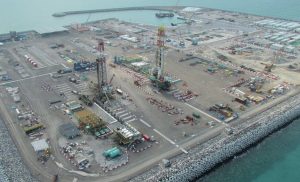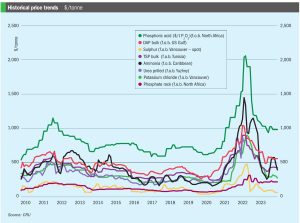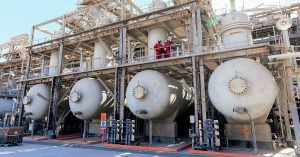
TSI World Sulphur Symposium 2024
The Sulphur Institute (TSI) held its World Sulphur Symposium in Charleston from April 2nd to 4th.

The Sulphur Institute (TSI) held its World Sulphur Symposium in Charleston from April 2nd to 4th.

Sulphur prices reached a low point in mid-February, with buyers looking to the tender from Muntajat as well as the return of Chinese buyers following the Lunar New Year holiday for the direction that the market would turn. CMOC’s 5 February tender for 40,000 tonnes of sulphur for early-April arrival was indicated awarded in the upper $90s/t c.fr on supply from the FSU, though details were not confirmed.

Qatar construction services company UCC Holding has signed a memorandum of understanding with the Kazakh Ministry of Energy for a gas treatment plant at the Kashagan field with a capacity of 6 billion cubic meters as part of the Phase 2B expansion. The memorandum was signed by Minister of Energy Almassadam Satkaliyev and Mohamed Moutaz Al Khayyat, chairman of UCC Holding.

Falling volumes of sulphur from refining and sour gas could turn Europe into a sulphur importer.

Already the world’s largest exporter of sulphur, Abu Dhabi continues to expand its sour gas production and sulphur output.

CRU expects sulphur prices to be supressed in early 2024 by high port inventory and limited phosphate export business. However, affordability continues to support raw materials purchases and leaves room for price increases, especially if downstream production picks up as expected and sulphur stock drawdown slows.

Urea. As February ended, urea prices found support in the US and Brazil while Europe remained subdued and Egypt struggled to find buyers. New Orleans was the one bright spot in the urea market – with NOLA prices benefitting from the meeting of suppliers and buyers at the TFI’s domestic conference. With positive sentiment all round, prices moved up $30/st, peaking at $390/st f.o.b. for March.

Pyrite roasting as a source of sulphuric acid continues to be a significant, albeit minor sector of the overall acid market.

US domestic oil production has surged during 2023, reaching 13.3 million bbl/d in December, a record not just for the US but for any single country’s oil production. Adding in natural gas liquids and biofuels takes overall liquids production to 21.4 million bbl/d. Exports are also running at record levels, around 6 million bbl/d. This is a remarkable turnaround from 2008, when production was less then 5 million bbl/d and exports essentially zero. Furthermore, non-OPEC production is continuing to expand, with Brazil reaching 3.4 million bbl/d of oil production and 4.2 million bbl/d of liquids, and Canada producing 4.8 million bbl/d of crude and 5.7 million bbl/d of total liquids, keeping oil prices moderated in spite of OPEC+ production cuts. Global oil production is expected to reach a record level in 2024, with non-OPEC+ liquids growth projected to increase by 2.7 million bbl/d, far more than demand growth of 1.6 million bbl/d. n

Small quantities of sulphur in a refinery or gas feed can present challenges for conventional large scale sulphur recovery techniques.